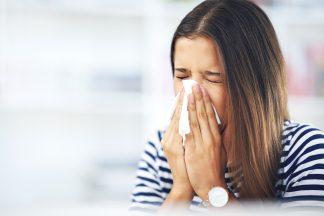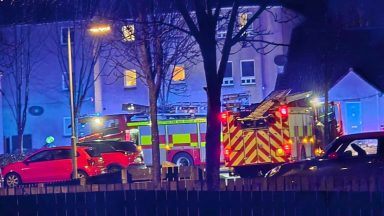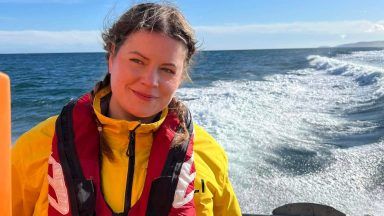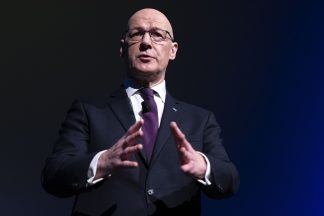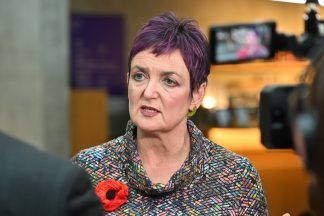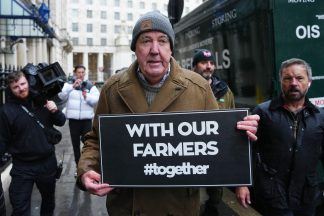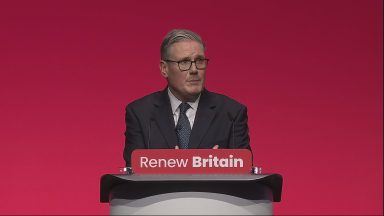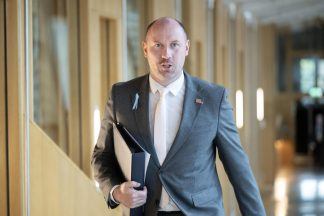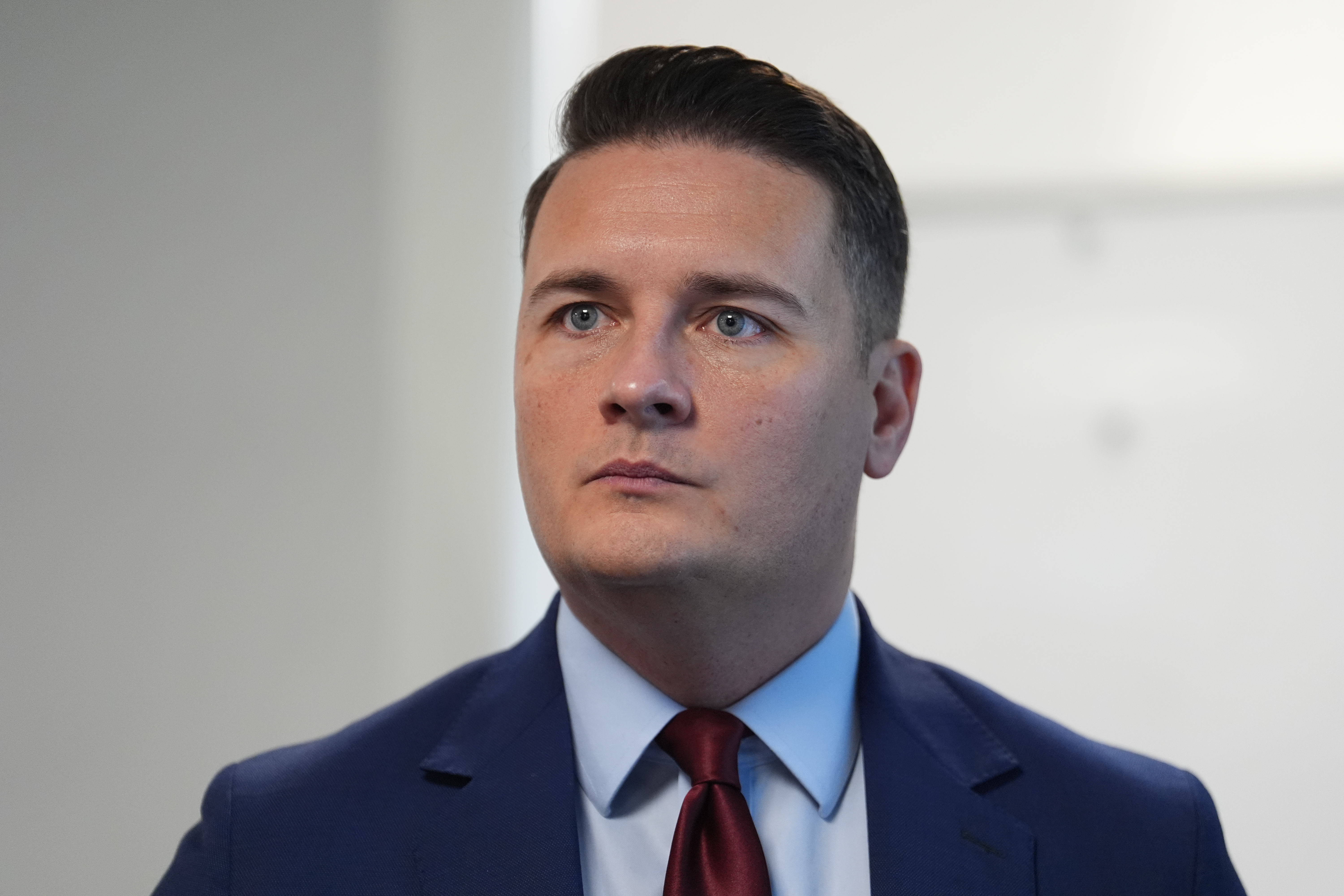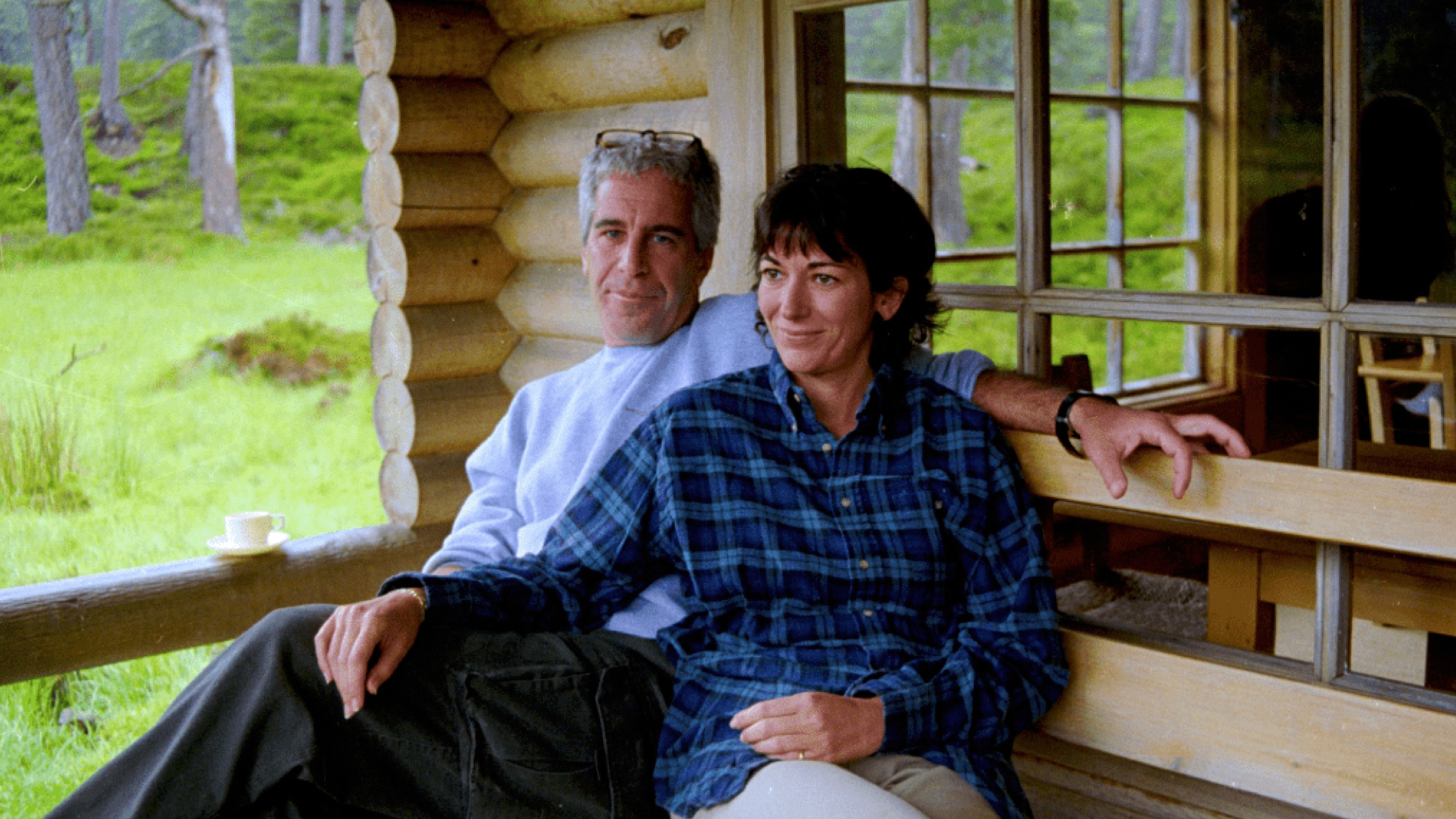The experience of coronavirus has altered the face of Scotland.
As we rang in the new year and heralded a new decade, with the sense of renewal and optimism that brings for so many, nobody could have imagined what was just around the corner.
Covid-19’s impact on people’s lives, livelihoods, liberties and relationships has already been devastating.
Increasingly, attention is turning to government handling of this crisis in its early days in the UK, with recent polling suggesting a figure of two-thirds and rising do not believe ministers acted quickly enough.
With more than 3.2m cases of coronavirus confirmed worldwide, and approaching a quarter of a million deaths, any recriminations may keep until the immediate crisis is over.
In Scotland, like in so many countries, politics, society and the economy have been upended – with implications for everything from our businesses, to our mental health, to how government operates.
STV News spoke to half a dozen experts – including a former chief medical officer for Scotland – about what we’ve gone through and where we go next.
On January 24, 100 days ago, two important things happened.
The World Health Organisation confirmed – as many scientists at this point already believed – that a new, alarming strain of coronavirus originating in Wuhan, China, was able to be transmitted on a human-to-human basis.
In Scotland that day, the first tests of the virus Covid-19 came back, with two people who had recently travelled back from Wuhan given the all-clear.
January 24 also saw the first meetings of the UK-level national emergencies committee, COBRA. Scotland’s health secretary Jeane Freeman, in Inverness visiting NHS Highland, had to abruptly curtail the trip to travel south.
But at that stage, Scotland’s then-chief medical officer (CMO) Dr Catherine Calderwood said the risk to the public from Covid-19 was “low”, although the country could see cases “at some stage”.
By the start of May, Scotland would have carried out around 75,000 coronavirus tests, with nearly 12,000 people testing positive for the disease.

Of all of Dr Calderwood’s CMO predecessors, Professor Sir Harry Burns was the longest-serving, appointed to the role under Labour first minister Jack McConnell in 2005 and staying in post until 2014.
Now professor of public health at Strathclyde University, through his medical connections he became aware “quite early on” of just how serious the virus could be.
Intensive care colleagues in London, in early February, told him of the “very, very worrying” initial cases they were seeing, and the disturbing questions that arose with them: “Would they have sufficient capacity? Would they have sufficient wherewithal to protect themselves from infection?”
“Any organism that spreads like this did and kills so many people is not an ordinary organism,” he said.
That final week of January, the minds of politicians and commentators were elsewhere: the UK’s departure from the European Union. Brexit was to finally, formally happen on January 31, albeit with an 11-month transition period.
In Remain-voting Scotland, as Brexit day approached, a poll found 51% of Scots backed independence.
On January 29, MSPs backed the principle of holding a second independence referendum by the end of the year – upping the stakes in Nicola Sturgeon and Boris Johnson’s constitutional stand-off over the right to hold a vote.
The same day, the First Minister chaired the first meeting of the Scottish Government Resilience Committee (SGoRR) concerning the coronavirus outbreak – Scotland’s equivalent to COBRA – while COBRA met again too.
Also that day, the UK confirmed the first cases of Covid-19: two Chinese nationals in York.
Sturgeon and Johnson, both leaders resurgent after hugely successful general election campaigns, were about to see their political agendas completely derailed by a virus that didn’t care about party or constitutional politics and had no notion of borders.
The question of complacency
Prof Burns’ experience of SGoRR as chief medical officer came during the H1N1 swine flu outbreak of 2009, while Nicola Sturgeon was serving as health secretary. He recalls it well.
“You felt you were all in this together, you were all trying to find the answers,” he said.
“The sense of teamwork was very positive and very encouraging and knowing that same thing would be happening now in the Scottish Government was reassuring to me.”
Swine flu was declared a pandemic by the World Health Organisation (WHO) just as Covid-19 has been. But it’s a matter of scale: H1N1 killed 66 people in Scotland, not thousands.
“You come up against something like this which has such international dimensions – it was far less so with swine flu,” explained Prof Burns.
“The international dimensions mean that the UK Government, because they control the borders and so on, is going to make much of the running.
“I’m not sure I would have felt so positive this time, because I got the sense the UK Government were a bit slow.
“I suspect the Scots and maybe the Welsh and Northern Irish as well were on the case a bit earlier than when the UK Government turned its mind to this.”
To his mind, there was complacency in the corridors of power in Westminster, partly informed by past outbreaks of other coronaviruses like SARS (severe acute respiratory syndrome) and MERS (Middle East respiratory syndrome): foreign diseases of which only a tiny number of cases sprung up in the UK.
“The initial things we saw suggested to me that down south they were thinking, ‘well, this is something in the far east and it will stay in the far east and it’s not going to do all of this stuff to us’,” the former CMO said.
“And there was some history that showed that had happened, or that view would have been correct, if what was happening in the past was happening now.
“But I just don’t think they got to grips with the reality of the situation fast enough.”
That’s not the view of an academic with experience of strategic crisis planning in the UK cabinet office.
“This situation is more than a black swan – this is what a friend of mine would call a black elephant.”
Dr Mils Hills
Dr Mils Hills, associate professor of risk, resilience and corporate security at Northampton University, says the UK Government has long classed pandemic influenza and a new pandemic disease as among the top risks to the country.
He said warnings about Covid-19 would have come in “very early to central government through intelligence and global health organisation monitoring”.
By January 3, UK health secretary Matt Hancock was aware of the issue of Covid-19, and in the coming days he spoke to health department officials and the Prime Minister about it.
The government’s scientific advisory groups began to meet in mid-January, and Hancock instituted daily meetings with officials about the developing outbreak.
“I think it is unfair to criticise plans and planners when the characteristics of this novel coronavirus are unprecedented,” Dr Hills said.
“Not since the polio outbreaks in the mid-20th century has there, for example, been a surge in requirement for a medical technology – and strangely, a kind of similar one.”
He added: “Coronavirus is in a way a bit like a natural disaster at full ferocity affecting an area that has previously not been so struck.
“We prepare for extreme weather in the UK, but we don’t plan for a typhoon that you would get in a tropical zone.
“This situation is more than a black swan – this is what a friend of mine would call a black elephant. Unknowable and unmitigable.”
And while the alarm bells may have been ringing, for the UK at least, February was the calm before the storm.
Cases continued to spring up in Europe, with countries such as France, Germany, Spain and Sweden all reporting coronavirus had reached their shores from early January to mid-February.
On Valentine’s Day, the first death from Covid-19 in Europe took place in Paris: a visiting elderly Chinese tourist.
Meanwhile in Scotland, no cases had yet been reported, although the First Minister, health secretary and CMO repeatedly warned coronavirus patients here were inevitable.
Much of the public’s attention was fixed on the terrible weather brought by Storm Ciara and Storm Dennis, which pummelled the country on consecutive weekends during the first half of February, bringing high winds, flooding and transport disruption.
Yet SGoRR meetings on Covid-19 were still taking place through February, the First Minister chairing all but one of them, a single meeting chaired instead by deputy first minister John Swinney.
What advice would Prof Burns have been giving the politicians? “I think I would have been pushing early on for testing… I would have been trying very hard early on to get the classic public health response to an infection, which is find out who’s got it and isolate them before they can spread it.”
Of course, that was indeed government policy for many weeks: the problems would come when suspected cases began to outstrip capacity.
In the early days of the crisis, Strathclyde University helped out by offering chemical reagents for testing to health boards, Prof Burns said – but the issues around why the UK could not or did not rapidly build testing capacity are more deep-seated than that.
“Britain used to have one of the biggest chemical industries,” Prof Burns said.
“ICI (Imperial Chemical Industries, once the largest manufacturer in the UK) was sold off years ago to a Dutch company and suddenly when we need reagents and we need stuff to do testing, we have to rely on China.
“There’s been a hollowing-out of our supply chains.”
The Italian experience

If there was any remaining complacency about the virus, perspectives began to alter quickly on February 22: that was the day Italy confirmed 76 cases of coronavirus, predominantly in its north, and the country’s first two deaths.
By the start of March, cases had spread to every region of Italy. By March 4, fatalities had reached triple figures; by March 12, they exceeded 1000.
What Scottish ministers and officials had been warning of throughout February finally came to pass: on March 1, the first case of Covid-19 was announced in Scotland – a man in the Tayside area.
In the final days of February, cases had already been confirmed in Wales, Northern Ireland and the Republic of Ireland, while in England, a man in Surrey became the first UK case to catch the disease in the community.
On March 2, Boris Johnson and Nicola Sturgeon attended their first COBRA meetings in relation to the developing public health crisis. In recent weeks, their absence until then, missing five previous sessions from that first on January 24, sparked a political backlash played out in the UK and Scottish Sunday papers.
Scottish Labour MSP Neil Findlay accused the First Minister of “negligence”, while the Prime Minister was accused of displaying “an almost nonchalant attitude” to Covid-19.
“I don’t think those are fair criticisms,” said Prof Burns.
“This should be about the science. The science predicts what’s likely to happen, and then the politicians can come in and say we think the response to that is x, y or z.
“But to begin with, these groups are there not to worry about the politics of this but just to decide, what’s the problem and what does science tell us about the way to fix that problem?”
On this, Dr Hills agrees. “No one needs signalling from the PM that the issue is being taken seriously by having him in COBRA or any other folk like the Scottish FM there.
“Theatrics really aren’t part of the system – I really do mean it when I say that politics are set to one side.
“It would almost be a failure of the system if the PM was attending all or many of these meetings. Delegation to a lead minister makes way more sense in terms of efficiency and effectiveness.”
Although speaking of nonchalance, the next day Johnson revealed at a Downing Street press conference he had visited a hospital with coronavirus patients where he “shook hands with everybody”.

A “four-nation” action plan to tackle coronavirus was unveiled by the UK and devolved governments, with the country as one entering the “containment phase” of the UK’s strategy, the first of four.
At a briefing in the Scottish Government headquarters of St Andrew’s House – a backdrop that would become increasingly familiar on the news – Dr Calderwood soberly and shockingly said officials were working on the assumption as many as 80% of the population could end up catching the virus.
From constitutional stand-off to cooperation and coordinated action in a matter of weeks: it was clear things had fundamentally changed.
There remain question marks over just how much input the devolved administrations had on the approach set out on March 2.
As The Guardian reported, the Prime Minister’s key adviser Dominic Cummings had been sitting in on meetings of the Scientific Advisory Group for Emergencies (SAGE) since February, a group crucial to informing the UK’s response.
Yet CMOs and chief scientific advisers from the devolved administrations could only listen in on the meetings as observers and could not ask questions, instead having to submit them in writing beforehand.
Devolved health ministers and officials did attend and give their opinions in COBR sub-committee meetings.
But Prof Burns said: “I don’t think it was a four-nation approach – they (the UK Government) did all the talking.”
“And having the Prime Minister’s special adviser there (at SAGE meetings) is puzzling. If, as they said at the beginning, it’s all about the science, what’s Cummings doing there?”
Dr Hills said it would have been “weird” for the Prime Minister not to have had eyes and ears in the crucial SAGE meetings.
“I have heard only good things about the penetrating questions that Cummings asks and how he is very open to doing things differently even if that does put people’s noses out of joint,” he added.
“There have probably not been many occasions where great ideas from SAGE could so quickly get converted into actions.
“Whether this has involved dictation to the devolved administrations, I am not sure.
“The situation sure seems better than the US federal vs state governor battles which have demonstrably cost lives.”
Aileen McHarg, professor of public law and human rights at Durham University, a specialist in devolution, suggests the issue may have been one common to inter-governmental work within the UK.
“One of the unsatisfactory features of devolution is how informal the systems for inter-governmental working have been, right from the beginning, and how dominated they have been by the UK Government,” she said.
“The UK Government gets to really dictate the extent to which it will share information and share decision-making with the devolved governments, and if it doesn’t want to, they can’t force it to.
“That doesn’t mean it can dictate how the powers are to be exercised.
“But I guess if you’re not in the room when things are being discussed, or you’re not being able to influence those decisions, you might find yourself in the position of not actually having much choice about how you exercise those powers.”
‘Delay phase’ begins
March saw the steady drumbeat of rising cases. By March 5, Scotland had six cases, there were 115 in the UK in total, and the first death was reported: a women in her 70s at a hospital in Reading.
Over the next seven days, Scottish cases increased ten-fold to 60, including the first case of transmission within the community: someone who didn’t catch the virus abroad or from someone who had been abroad.
Already, health officials feared the true number of infections across Britain could be anything from 5000 to 10,000.
CMOs in England, Scotland, Wales and Northern Ireland raised the risk of Covid-19 to the UK from moderate to high. It was time to escalate the UK strategy to the next phase.
The initial steps of the second “delay phase” saw councils asked to suspend any planned overseas school trips, and over-70s advised not go on cruises.
The new phase also brought what would come to be one of the most controversial aspects of the UK approach: the decision to abandon the policy of ‘test, trace and isolate’ for all suspected cases.
Instead, anyone with symptoms was asked to stay at home for seven days, and only contact the NHS if their condition deteriorated or did not improve after the week of self-isolation.
The Scottish Government “should have continued” a policy of mass “test, trace and isolate” even if it had meant deviating from the four-nation strategy, Prof Burns said.
“It might have been a very practical thing, and that would explain why the Scottish Government did it as well, if you simply don’t have the kits, because it’s a complicated test,” he added.
“You take cells from someone’s mouth or throat or whatever, and you have to extract the RNA of the virus and measure miniscule amounts of this RNA to prove that people have got it.
“The clever lab people tell me that extraction can be quite problematic.
“So, it might have been a practical reason, but other countries were doing it: Germany and so on were doing it. I don’t know why the UK dropped mass testing.”
Linda Bauld, professor of public health at Edinburgh University, says testing is only part of the picture: as well as building up that capacity, we also needed to develop the infrastructure to trace the contacts of all those suspected to have Covid-19.
“When cases get too high, the system can’t handle that, so we couldn’t be contact tracing, you know, 10,000, 20,000 people,” she said.
“I can understand why it was paused but what I don’t understand is we should have continued building up the infrastructure for mass contact tracing for when we come out of some of the lockdown and when cases are lower.
“We needed to be getting a workforce ready, we needed the technology to be there, we needed health boards and others to be drawing up their own plans.
“Some of that has happened but we should have been using the time – the pause around the middle of March and now – to really increase that capacity.
“I know it’s happening now, but I think it’s been too late.”
The successes of mass testing in suppressing the virus have received widespread attention in countries like South Korea and Germany, but Prof Burns also highlighted the examples of Greece and Norway – smaller countries with rigorous ‘test, trace, isolate’ in place – where deaths have been kept down to between 100 and 250.
It all comes back to the reproduction number – known as the R number – which is how many people each infected person is infecting in turn. In mid-March in the UK, that number is believed to have been at least three.
“That meant people were circulating and rubbing shoulders with each other and very quickly, by the time it hits five or six, then literally you’re well over 1000,” explained Prof Burns.
“Three becomes nine becomes 27 and it just explodes.
“If you isolate people who have the virus then the virus can’t spread, so there’s no doubt that the ‘test, trace, isolate’ approach would have kept a lid on things much earlier.”
Yet over the course of the outbreak, mass testing has been described at various points as a “distraction” and “not the panacea everybody thinks it is” by officials like Dr Calderwood and the Scottish Government’s national clinical director Jason Leitch.
They insisted the tests aren’t always reliable and that social distancing is a more effective way of preventing the disease’s spread.
The first steps towards lockdown
Given what we now know about the likely R number in Britain at the time, much has been made of the decision to allow the Cheltenham Festival to take place from March 10 to 13, the racing event attended by 250,000 people.
Nicola Sturgeon moved ahead of the UK for the first time on an issue on March 12 (a Thursday) – straight after the COBRA meeting which agreed the move to the “delay phase” – by announcing the banning of mass gatherings from the following week.
Speaking later from Number 10, the Prime Minister suggested this was initially down to a Scottish-only “resilience” issue – before the UK Government promptly issued near-identical guidance the following day.


Even the First Minister’s pre-emptive announcement could not prevent a Rangers v Bayer Leverkusen Europa League tie taking place at Ibrox the evening of March 12, nor Lewis Capaldi’s sell-out arena concert in Aberdeen on Sunday, March 15.
“I get the sense that Scotland might have locked down earlier,” said Prof Burns, who also sits on Scotland’s council of economic advisers.
“But you could see that there would be a lot of discussion at a political level, and it was pretty clear that England was led to lockdown fairly unwillingly.
“So, yeah we could have done it earlier and probably should have done it earlier, but again, the economic damage that does – not just the damage it does to the economy but the damage it does to people who will lose their jobs and are struggling – that’s got to be taken into account.”
Partly, the move to lockdown came from a bombshell paper from Imperial College London published on March 16 which circulated at the highest levels in Westminster.
Citing fresh data from Italy, the assessment warned the price of inaction in the face of coronavirus could be 250,000 British lives, and further predicted a dire, previously unforeseen level of need for intensive care beds.
The scary-sounding notion of “herd immunity”, and the idea the peak of the virus could be massaged rather than aggressively suppressed, fell by the wayside.
“We were too late, we were underprepared, we weren’t ready and some of the scientific advice was conflicting,” concluded Prof Bauld.
Meanwhile, Scotland saw its first Covid-19 death on March 13. Within nine days the death toll would be 14. By April 2, officially, it was more than 100. By then, known UK deaths had already soared beyond 1000.
The social restrictions we would come to know so well came in stages. In the worlds of sport and entertainment, many organisations took matters into their own hands in the wake of the First Minister’s announcement, with the SPFL suspending all matches on March 13.
Three days later, the Prime Minister announced plans to “shield” vulnerable groups like the over-70s, those with underlying health conditions and pregnant women, and told everyone to avoid “non-essential” contact and travel.
And causing consternation in the hospitality and leisure sectors, he urged people to avoid pubs, restaurants, cafes, museums, gyms and entertainment venues without officially ordering these sites to close.
That order would finally come on March 20, and with it, an unprecedented financial stimulus package to keep the economy afloat, with the government pledging for the first time in UK history to pay a proportion of people’s wages, announcing a furlough scheme that would see workers receive an income through the Treasury of up to 80% of their normal pay.
It followed a previous announcement from Chancellor Rishi Sunak, a figure rising to increasing public prominence, backing businesses with £330bn worth of state-backed loans and offering grants and business rates relief to firms in hospitality and leisure – measures adapted mostly intact by new Scottish finance secretary Kate Forbes.
In Scotland, the First Minister jumped the proverbial gun once again on March 18, ordering the closure of schools and nurseries for all pupils bar the most vulnerable and the children of key workers, although she was not alone: the administration in Wales did the same.
At the 5pm Downing Street briefing later that day, UK education secretary Gavin Williamson followed suit for schools in England.
“Perhaps the First Minister was just getting a bit fed up with dilly-dallying,” suggested Prof Burns.
Stay at home
History was made again on March 23. A sombre Boris Johnson gave a televised address to the nation, ordering all residents of the UK to stay at home except for the “limited purposes” of shopping for essentials, getting medical supplies, going for one session of daily exercise or helping a vulnerable person.
Four days later, the Prime Minister would himself be diagnosed with coronavirus.
Announcing the same measures for Scotland, Nicola Sturgeon was blunt. “The stringent restrictions on our normal day-to-day lives that I’m about to set out are as difficult and they are unprecedented.
“They amount effectively to what has been described as a lockdown.”
A fortnight before all this, Toni Giugliano flew into Rome for a visit, before any travel restrictions had been put in place and while cases in that region of Italy were no more alarming than in parts of England
A Scottish-Italian citizen and Italian speaker with family there, Italy is Mr Giugliano’s second home.
Within days, he was living under quarantine, as a sweeping national lockdown was imposed by the Italian government.
He spoke to STV News about his predicament on March 10, in comments that now seem eerily prophetic: describing social distancing, one-in, one-out queueing at supermarkets and the closure of public spaces.
“I would describe it as a very Italian lockdown, in the sense you had to fill out a form and it’s all very official,” he said.
“You just wouldn’t have that in the UK – I just don’t see that happening here, whereby in order to leave the house you’re printing out your certificate, and if you’re stopped by the army or by the police you have to justify it.”
As senior policy manager in Scotland for the Mental Health Foundation (MHF), Mr Giugliano has been busy with work since his return examining the effect of lockdown.
A recent study by MHF Scotland found people experiencing loneliness has doubled since the lockdown began – 24% of adults – while four in ten young people have been feeling it.
“Schools are fundamental for our young people’s wellbeing,” said Mr Giugliano.
“Yes, we need to make sure we are saving lives and we’re guaranteeing safety but schools provide resource for parents, they provide support for parents, particularly those parents in low-income families that rely on school communities.
“Reintroducing young people back into environments where they can thrive, where they can develop emotionally, is absolutely crucial.”
The lockdown has affected people’s mental health in diverse ways, he explained, with not all of them being negative.
“Certainly for some people, this is an opportunity to be able to do the things that perhaps they’ve never had the chance to do,” he said.
“Perhaps time with their family, perhaps a chance to reconnect with people that they haven’t spoken to in a long time, perhaps a chance to rediscover an old hobby.”
But it depends on your circumstances.
“What we know is that people who are in a financial or economic situation where they don’t know if they’re going to be able to make ends meet, if their business is going to reopen after this lockdown, we know there are people out there, perhaps who are self-employed, who don’t have that financial security,” Mr Giugliano said.
“We are very worried about the financial picture here.”
There’s “no getting away” from the fact socio-economic policies will have the biggest impact on people’s mental health, he said, pointing to the long-standing link between job security and suicide.
“We know what happens when there’s mass unemployment,” he said. “Historically, we’ve seen an increase in suicide rates. We need to make sure we do everything we can to prevent that from happening.
“Suicide rates are three times more likely amongst men and ten times more likely in the poorest communities in Scotland.”

The Chancellor has been on television on several occasions escalating the socio-economic response to this crisis, and yet progress is halting. After days of clamour, the self-employed were backed with the same furlough package as PAYE workers – but the scheme won’t be open until at least June.
The universal credit standard allowance has been raised and the minimum income floor for eligibility removed – but it still takes five weeks after a successful application to receive your first payment, and the system has faced the added pressure of 1.2m new claimants since the pandemic began.
As Scots try to figure out how to cope with a lockdown that subverts so many of our social instincts and brings all kinds of worries, many have turned to drink.
Although it may be partly explained by the closure of pubs, depending on the week, alcohol sales in Scotland are up anywhere from 50% to 58%, according to data Prof Bauld has seen.
Surveys suggest “people who normally don’t drink much anyway are drinking less, and some of them aren’t drinking anything”, she added.
But those who normally drink a lot – those “at most risk of directly alcohol-attributable mortality or poor health outcomes” – are drinking much more.
“There’s a problem here, though we can all understand how that happens in lockdown,” she said.
She added: “Underneath everything I think there’s just this mild anxiety that most of us have – we don’t feel normal – and of course, for some people, there’s very significant anxiety and depression.”
Deaths climb and crisis hits No 10
The pandemic was next to reach right into the heart of both the Scottish and UK governments, albeit in very different ways.
On April 5, as Covid-19 deaths in Scotland topped 350 and neared 5000 in the UK, Dr Calderwood stepped down as Scotland’s chief medical officer.
Photographed visiting a second home with her family in Fife – contrary to the lockdown restrictions she herself was explaining in public information films on television – her position became untenable throughout the day, despite the FM’s strong initial resistance to losing such an important official.
“I did feel for her. A very hard-working lady,” said Prof Burns.
“Presentationally I could see the problem,” the former CMO added. “But in fact, you get your family in a car and drive to some place that you owned and unload them, you’re not exposing them to anyone else.”
Later that day, news broke that would rock British politics: Prime Minister Boris Johnson had been admitted to hospital after a week of dealing with his own bout of coronavirus.
The next night, he was moved to an intensive care unit – as so many thousands of others have been – where he would later reflect that his life had hung in the balance.
By April 12, patient deaths in the UK had reached 10,000. On April 19, new National Records of Scotland statistics showed more than 1600 fatalities in Scotland linked to Covid-19.
The new figures also broadened the public’s understanding of the devastating toll coronavirus was taking in the country’s care homes.
The proportion of virus-linked deaths occurring in Scottish care homes has risen in a matter of weeks from 25% to 39%, with nearly 900 to date and half of all homes registering at least one confirmed or suspected Covid-19 case. Issues around personal protective equipment (PPE) for staff in these homes have rarely left the headlines.

Data coming out of south-east Asia and Italy early on made it “very clear that a lot of older people were dying and a lot of them were dying in care settings,” said Prof Bauld.
“The whole issue of PPE for our social care staff, the testing that is needed for older residents, we should have realised that was going to be the problem that it has been and I think we’ve been playing catch-up in that sector.
“Sadly, it reflects the fact that social care is undervalued and hugely under-resourced in the UK and that’s a historic problem.”
It takes us back to planning: the thorny question of Scotland and the UK’s preparedness for a serious pandemic, one that is shrouded in secrecy.
Much hay has been made of a 2016 UK simulation drill called Exercise Cygnus, which examined how the NHS would handle a pandemic. The findings are classified but reported to be “terrifying” and to have revealed major gaps in the country’s preparedness.
And as the Daily Record reported on Saturday, the Scottish Government carried out its own planning exercise four years ago, dubbed Silver Swan, which identified issues around PPE, with it unclear the extent to which its recommendations were turned into action.
Yet despite the problems of unprecedented global demand for PPE, comparatively high death tolls and a peak of Covid-19 hospital cases in Scotland of nearly 2000 on some days in April, politicians on both sides of the border are right to say at no point has the NHS been overwhelmed in the way many feared it might be.
“Given the challenge,” said Dr Hills, the UK’s response has been “pretty good”. He added: “No country has ‘done well’ as I am not sure that doing well is something that can be measured in conventional terms.
“Even those countries that appear to have done well in terms of very strong (or no) lockdown may suffer with second or third spikes of infection.”
However, Prof Burns is emphatic. “The UK’s preparedness was not good.”
“I think in the post-Covid review of how we did, it would be very interesting to look at the discussions that took place after swine flu and various other epidemics that occurred, because there would have been discussions,” he said.
“It would also be interesting to know if the results were shared with the devolved nations, as I would be pretty confident that the First Minister, given her experience as health minister during the swine flu epidemic, would take this very seriously, and would make sure we were prepared.”
Prof Bauld added: “We’re beginning to understand where the errors were made – and let’s face it, they were made in the UK.”
But she feels, from a Scottish standpoint at least, one strength of the response has been clear, consistent messaging. Polling would seem to bear that out, a YouGov poll conducted in late April finding 71% have a lot or a fair amount of confidence in the First Minister, while Scots are split almost 50-50 on the UK Government’s handling of the crisis.
“I’ve been when I can, watching both (Scottish and UK government) briefings every day, and the tone, the clarity, the unity is different, particularly the tone and authority with which the First Minister has communicated,” the Edinburgh professor said.
“In Westminster, we’ve seen various colleagues contributing to that. Clearly, (England’s) chief medical officer (Chris Whitty) is hugely credible – as is the chief scientific adviser – but he’s not always been there because he was also unwell.
“But the politicians in Westminster, I think, have been much more defensive, and then, of course, sadly we did not have a Prime Minister as he was seriously ill.
“So, I think the communication in Scotland has been better. Some of the earlier decisions that were made by the Scottish Government I think have been preferable.”
Prof McHarg said that while there have been variations in the two governments’ approaches, differences of substance have been fewer, and in some cases – like Sturgeon’s advice to close down “non-essential” construction, contrary to guidance in England – haven’t always worked out.
“I imagine they will probably want to continue operating on a coordinated basis,” she said.
“They run the risk when they’re acting just through guidance and not through legislation that their guidance will be ignored.”
She said the advice to the construction sector was “basically ignored” because “there was no legislation to back it”.
Key aspects of government messaging, particularly early on, revolved around food and groceries shopping, amid initial panic buying of long-life shelf items such as pasta, anti-bacterial products and – at times, to a rather ridiculous extent – toilet roll.
David Lonsdale, director of the Scottish Retail Consortium (SRC), said: “Overall we have been impressed and heartened by the support and assistance on offer from the UK and Scottish governments to retailers during this crisis, including the flexibilities we asked for – like on shop opening hours, on delivery timings to stores and to warehouses, and the financial support.
“We have said to government that when it comes to the phased ending of the lockdown they need very clear and simply messages for firms, for workers and for shoppers.”
The ‘new normal’?

Lockdown has already changed society in far-reaching ways.
“Very early on in this we started talking about a ‘new normal’,” said Prof Burns. “It’s a phrase that’s come into common use now.
“I hope we don’t go back to normal. I hope that, as a society, we have discovered more social cohesion. When you go out for exercise, you pass people at a distance but there’s always a smile, a wave, a few words. That people are helping each other out in a way they’ve not done routinely, they haven’t had to do routinely, I suppose, but the spirit of helping each other has been very heartening.
“And the economic implications of this, I think, should be that we are much more local in our investment, that instead of having big corporations come along and employ a few folk in a factory and then go off when profitability doesn’t look right, we have inclusive growth that builds on the kind of businesses folk have turned to during this time.”
Prof Bauld and Dr Hills both specialise in behavioural science. As we prepare for the seventh week of lockdown, are they surprised at the extent to which people have abided by the rules?
“It’s been unusual the extent to which people have followed the advice,” Prof Bauld said.
“In terms of behaviour, there have been really significant changes.
“The first one, obviously, is the switch to trying to communicate with others in our social networks, families, in a different way, not being able to see them, having to suddenly get access to digital tools and, of course, not everybody is able to access those.
“The second thing is we’re all being encouraged to follow public health guidance – things like hand hygiene, which most of us should have been doing anyway, but there’s been a shift.”
Dr Hills said: “It’s quite extraordinary and does show that people are essentially and inherently sensible, trustworthy, caring and minded to do the right thing.
“There have been relatively few breaches of the rules – a kind of quarantine by consent. I think restrictions on life will be accepted for a considerable time to come if necessary.
“A key enabler here has been the continuity of food chains – just amazing – and the adaptability of retailers.”
The SRC estimates that retailers still operating in Scotland have spent £9m on PPE and on implementing social distancing measures, such as through plexiglass screens, signage and floor markings. “This will rise as more so-called ‘non-essential’ shops re-open,” said Mr Lonsdale.
Prof Bauld added: “The vast majority of us – from the data, over 90% of us – are following the advice almost at all times, and the divisions that we had experienced before around Brexit, independence, et cetera – they’re all still there but there’s a much bigger threat at the moment.”
What about politics as usual?
So far, despite the all-consuming crisis of Covid-19, the Prime Minister has vowed to stay the course on Brexit, with no extension to the transition period. The UK and EU’s chief Brexit negotiators have resumed talks to strike a trade deal, after both had to self-isolate in March with coronavirus symptoms.
But on March 18, the Scottish Government formally dropped its plan for indyref2 in 2020.
“I’m not surprised that the independence referendum proposal was ditched,” said Prof McHarg.
“That faced huge problems in terms of getting the UK Government to agree and the possibility of legal challenges and so on.
“I imagine for the Scottish Government this is a little bit of a useful get-out, which is not to say they weren’t right to do so.”
Next year, if it still goes ahead, is supposed to see a Holyrood election, with the SNP looking for a fourth term in government. If it takes place, Prof McHarg “would expect the constitutional question to come back and to be a big issue in that”.
“We have seen that constitutional politics or viewing this whole crisis through a constitutional lens has not gone away,” she said.
“There are some people who want to interpret things in those terms, so I don’t think this is the end of the independence debate.”
Meanwhile, Prof Burns hopes leaders will turn their attention to making the country more “self-sufficient” in areas like manufacturing, and “look to our own people”.
“If that means we’re slightly less profitable than offshoring to the far-east or whatever, so be it. We create a better society, a more equal society, a healthier society,” he said.
“I would like to think we’ll get there… so I’m optimistic in the medium term.
“In the short term I think it’s going to be very difficult to get out of lockdown. I think very, very gentle moves in that direction, keep a very close eye on the number of cases we’re seeing, and test, test, test.”
On Friday, the UK Government claimed a capacity for 100,000 coronavirus tests per day – a target set by health secretary Matt Hancock at the start of April – although the figures included a bit of jiggery-pokery around home testing kits that have been delivered but not yet returned.
Total testing capacity in Scotland has risen from 350 a day at the start of the outbreak to more than 8000, according to the First Minister.
Yet Germany, by the start of April, was already averaging 116,000 tests a day. With a population around a fifth higher than the UK’s, Germany has had a quarter the number of deaths.
And Norway, a country of comparable population to Scotland, which dramatically ramped up testing from the early stages of the crisis, has tested more than 170,000 citizens – between two to three times more than Scotland. Despite nearly 8000 infections, Norway’s death toll is 210.
In Scotland, combining confirmed and suspected Covid-19 cases, deaths number more than 2500.
Norway was also one of the first European countries to develop an innovative contact tracing app, which informs Norwegians by mobile if they have been close to an infected person, using anonymous health data.
But looking to the future, technology is only part of the equation if Scotland is to have robust contact tracing along with testing – measures all UK governments agree will be essential to ease the lockdown.
Contacts traced will then need to be quarantined, explains Prof Bauld. “Most people will be able to self-isolate at home but there will be some who cannot for very good reasons.
“Either they don’t have good accommodation, or they are in a situation where they can’t stay in the home for whatever reason.
“Governments needs to think about using hotels or setting up other places where people can be isolated for the time that is required.”
How will this change us?
The Scottish Government told STV News dealing with Covid-19 “is the biggest challenge we have faced in our lifetimes”.
A spokeswoman said: “The Scottish Government is engaged in a significant expansion of testing capacity to support a test, trace and isolate approach, which will be a crucial part of any moves to lift the lockdown measures in the future.
“At all times, the Scottish Government’s actions have been guided by the best and most up to date expert scientific advice, working closely with governments across the UK.
“Decisions will always be made in the best interests of people in Scotland. The virus doesn’t respect borders or boundaries and it makes sense to align our activity as much as possible.
“This is the biggest challenge we have faced in our lifetimes. It is right and proper that decisions taken during this process face scrutiny but all our efforts are going towards protecting life and the people of Scotland during this unprecedented crisis.”
A UK Government spokeswoman said: “This is an unprecedented global pandemic and we have taken the right steps at the right time to combat it, guided by the best scientific advice and working closely with all four nations of the UK.
“At all times throughout the four nations the NHS has had the spare capacity which it needs to respond to the pandemic, with intensive care unit beds and ventilators available to anybody requiring such specialist care.
“The government has been working day and night to battle coronavirus, delivering a strategy designed to protect our NHS and save lives, and take unprecedented steps to support businesses and workers and protect the UK’s economy.”
At the inter-government level, one change Prof McHarg hopes the pandemic will bring about is “a more federal spirit”.
“If the UK is to survive, then the various levels need to learn to cooperate with each other,” she said.
“The UK Government needs to not pull rank. The devolved governments need to recognise the value of common approaches.”
She added: “I actually think they do. There’s been a lot more cooperation than conflict in our system of devolution in the UK.
“Sometimes that cooperation is overlooked because it’s not the thing that makes headlines, but having more formal structures for that cooperation and a more cooperative attitude would be a benefit.”
And what about the country’s mental health in these times? “Make sure you are checking reputable sources because there’s a lot of news out there that isn’t and there’s a lot of fake information doing the rounds on social media.” That’s the advice from Mr Giugliano.
“No one has a crystal ball. No one knows what’s going to happen in seven months’ time, so let’s take it a day at a time,” he added.
Economically, the prospects are stark, with global financial disruption already rampant, and expected by many to reach levels not seen since the Great Depression of the 1930s.
The Scottish Government’s chief economist has warned GDP could collapse by a third in the coming months, bringing with it a tide of joblessness and business closures.
“We’ve already seen several retailers going into administration during this crisis,” said Mr Lonsdale.
“I have no doubt we will see more, unfortunately, particularly if they are unable to trade and generate an income.
“Government financial assistance will only support the industry for so long – ultimately it is about getting retail back up and running and doing what it does best.”
On April 30, speaking at his first Number 10 press conference since he was himself hospitalised, Boris Johnson declared the UK is now “past the peak” of the disease.
The question is, and will continue to be: at what cost?
Follow STV News on WhatsApp
Scan the QR code on your mobile device for all the latest news from around the country




